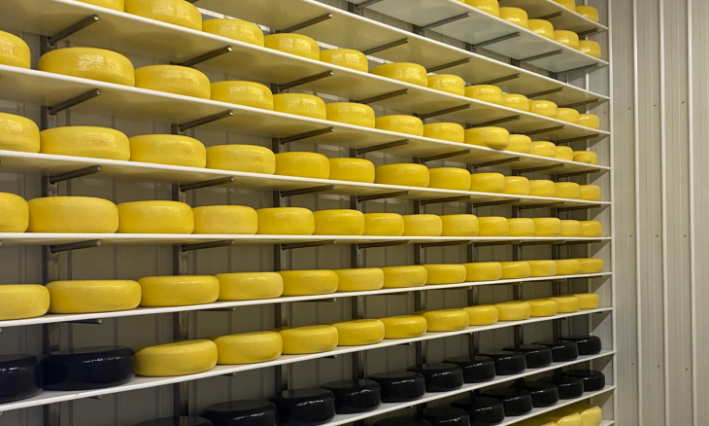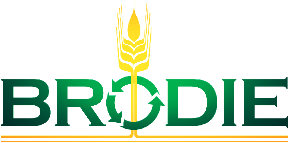- Canada-U.S.-Mexico Agreement (CUSMA) was ratified by Canada in March 2020 and came into force as of July 1. The Canadian dairy industry generally has a defensive interest relative to CUSMA, with great sensitivity to dairy market access concessions that pile on other recent trade agreements, along with important provisions impacting classified milk pricing and exports of skim milk powder and milk protein concentrate, and little practical ability to respond to access to the U.S. market provided under CUSMA.
- The Comprehensive Economic and Trade Agreement (CETA) between the European Union (EU) and Canada came into force in the fall of 2017 and is in the third year of its implementation of increased access to the Canadian cheese market. Ultimately, it allows for increased access of 17,700 tonnes of cheese imports from the EU. The Comprehensive Partnership for Trans-Pacific Partnership (CPTPP), which provides access across a broad range of dairy products, is in year two of implementation. Moreover, Canada’s allowable dairy exports deemed subsidized will fall to zero as of Jan. 1, 2021 under the World Trade Organization (WTO) Nairobi Declaration.
- The Canadian dairy market access provided to the U.S. under CUSMA resembles the broad access provided under CPTPP, with key differences being significantly higher access for bulk cream and a much greater prospect that bulk fluid milk import access will be filled under CUSMA. The access provided by Canada to the U.S. thus piles on access recently granted under other major trade agreements. CUSMA also granted Canada access to the U.S. dairy market in cheese, butter, skim milk powder and a range of other dairy products.
Under CUSMA, Canada agreed to remove milk price Class 7 within six months of coming into force and agreed that pricing for milk used to make skim milk powder (SMP) and milk protein concentrate (MPC) will be based solely on U.S. product prices and the Canadian processor margin.
Canada also agreed to limits on exports of SMP and MPC (combined) with a 35,000 metric ton quota by year two of CUSMA and an over-quota surcharge amounting to $540 per metric ton; an analogous arrangement was agreed to for Canadian exports of infant formula. Canada and the U.S. also agreed to expanded notification and consultation regarding changes in dairy policy and enhanced transparency in aspects of market regulation.
Adjustments for CUSMA coming into force
In June 2020, some clarifications became evident regarding how Canada will handle adjustments to CUSMA as of July 1. Many of the provisions of CUSMA for Canada operate on a Canadian dairy year basis (Aug. 1-July 31), and for this reason, year one is shortened to the month of July 2020, and year two begins Aug. 1. This accelerates the implementation of the more restrictive export limitations for SMP and MPC.
Global Affairs Canada (GAC) released notices in June clarifying an allocation mechanism for exports of SMP and MPC within-quota, and that over-quota exports entail an export charge of $540 per metric ton payable to the federal government. For year one import access on dairy products operating on the dairy year, GAC has indicated that year one volumes will be pro-rated for the partial year (one month) and the beginning of year two will occur Aug. 1. The tariff-rate quotas (TRQs) for dairy imports from the U.S. under CUSMA will essentially be allocated to importers of record, notably processors, consistent with established practice in Canada.
Canada has six months from CUSMA coming into force to remove milk Class 6/7. This may have effectively already occurred. For example, regulatory websites in British Columbia and Ontario show changes in provincial milk marketing regulation made effective June 1 that eliminate Class 6/7, consolidate the sub-classes of Class 4(a), and appear to place milk/components previously marketed in Class 7 into Class 4(a).
Potential points of friction
In the period immediately leading up to CUSMA coming into force, issues were evolving that could form points of contention regarding dairy in CUSMA. In late June, representatives of the U.S. dairy industry and the U.S. government aired complaints regarding Canada’s allocation of dairy TRQs. The U.S. government and industry appears to have had expectations of grabbing a share of the TRQ allocations, allowing the U.S. dairy industry to more readily dump product into Canada. That the TRQs in consideration of CUSMA dairy imports were allocated to Canadian importers should come as no surprise to the U.S. as Article 8 of the Export Import Permits Act directs the Minister to allocate import permits to Canadian residents; this act was not revised in consideration of CUSMA implementation.
Secondly, it can be anticipated that the matter of Grade B milk in the U.S. could emerge as an issue for Canada. The U.S. produces Grade B milk and markets products from Grade B milk; these products can be exported. But products made from Grade B milk are simply incompatible with food safety standards in Canada. As this awareness grows, the Canadian dairy industry, and indeed Canadian consumers, should be concerned.
Anticipated impacts
For Canadian dairy producers, the Canadian market access conceded to the U.S. under CUSMA will hurt. It can be anticipated that the import product volumes allowed under CUSMA will be entirely filled by the U.S. With the in-quota volumes of cheese under CETA now essentially being filled, and volumes under CPTPP building, imports will take up a large proportion of domestic dairy market growth, leaving less organic market growth for producers in Canada. This is occurring as market growth overall is at risk from the reduction in Canadian food service demand and COVID-19-related recession.
At the same time, the non-tariff barriers that require most dairy products sold in the U.S. to meet U.S. Grade A standard (equivalent standards are not accepted) make it highly unlikely that Canada will be able to make much use of the access to the U.S. it was provided under CUSMA. This compounds a situation in which Canadian inbound milk used in dairy manufacturing is already priced significantly higher than in the U.S. (by design), and in which CUSMA prohibits exports viewed as subsidized among members (and illegal under the WTO as of 2021 in any event).
Under CUSMA, it was effectively established that Canada can have non-subsidized dairy exports, a key victory for Canada in the struggle to achieve market balance between butterfat and non-fat solids when it is structurally surplus in non-fat solids. However, the limits placed under CUSMA constrain the volumes of non-fat solids-based products that Canada can export.
In 2018-19, Canada exported about 55,000 metric tons of SMP and MPC (combined); with year two of CUSMA almost immediately upon us, it will generate a volume that would be approximately 20,000 metric tons over the CUSMA export quota. How this will be handled will need to be determined; in all likelihood it will involve some combination of increased marketing of non-fat solids in Class 4(m) for feed, and perhaps filling the CUSMA export quota with SMP exports first, with the prospect that MPC can perhaps better carry the over-quota export charge. At the same time, Canada’s capacity for export of MPC is actually quite limited.
The view that emerges should concern the Canadian dairy industry. The access for imports through trade agreements expands with CUSMA, and the actual fill of allowable import volume will intensify; this will dampen growth in production quota. The changes in removing Class 7 and limiting exports – while preserving export access – will ultimately pressure pool revenue as increasing volumes are shifted into Class 4(m) to accommodate the limits on exports of SMP and MPC.
This stands to dampen the blend price. Some will be struck by the oddity of a situation in which the U.S. is poised to fully utilize its access to Canada, yet Canada will be sharply limited in utilizing its access to the U.S., largely the subject of a legacy trade irritant Canada has with the U.S. Dampened market growth, dampened prices, and little, if any, offsetting access to growth through export means that CUSMA is mostly a source of worry for Canadian dairy.









